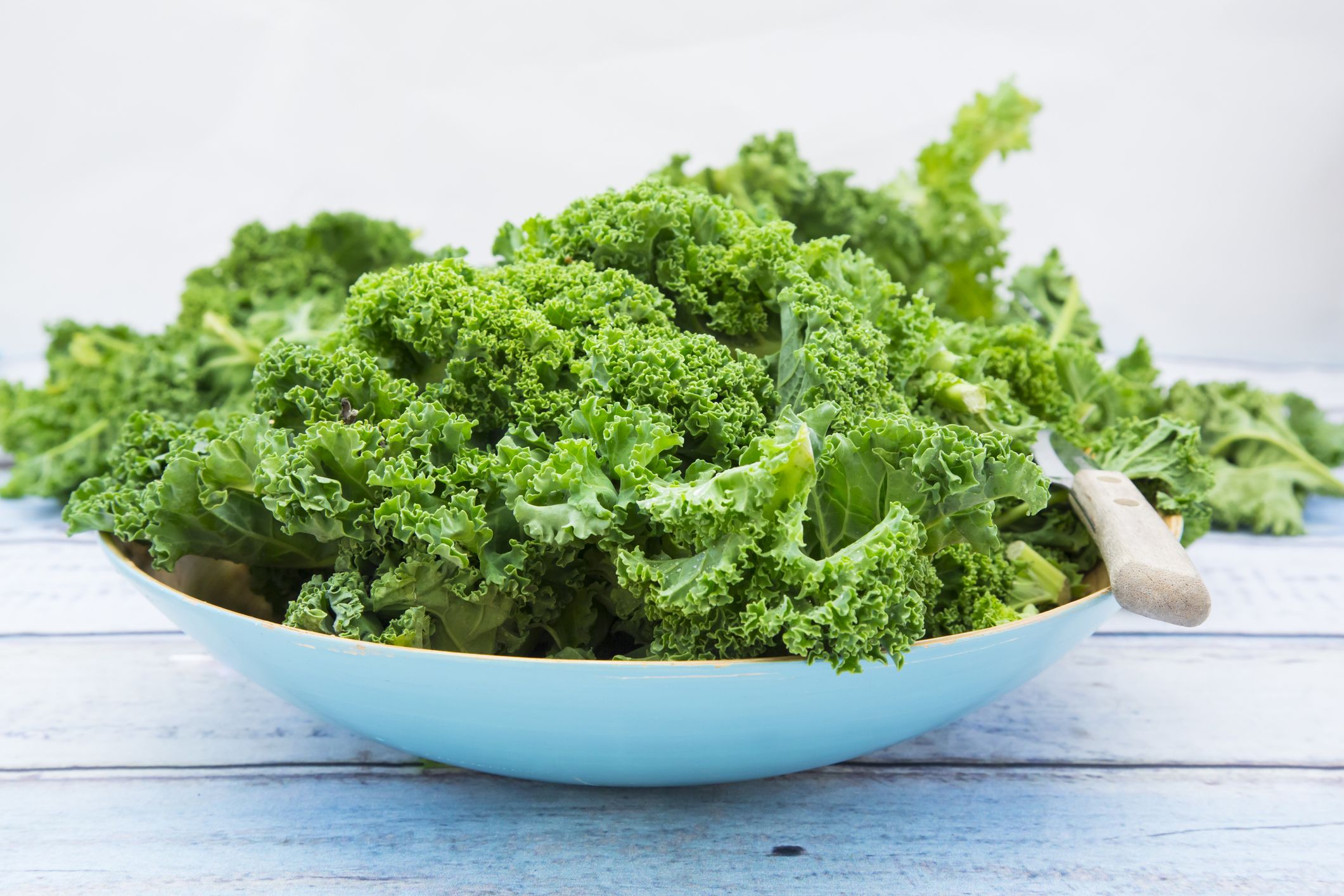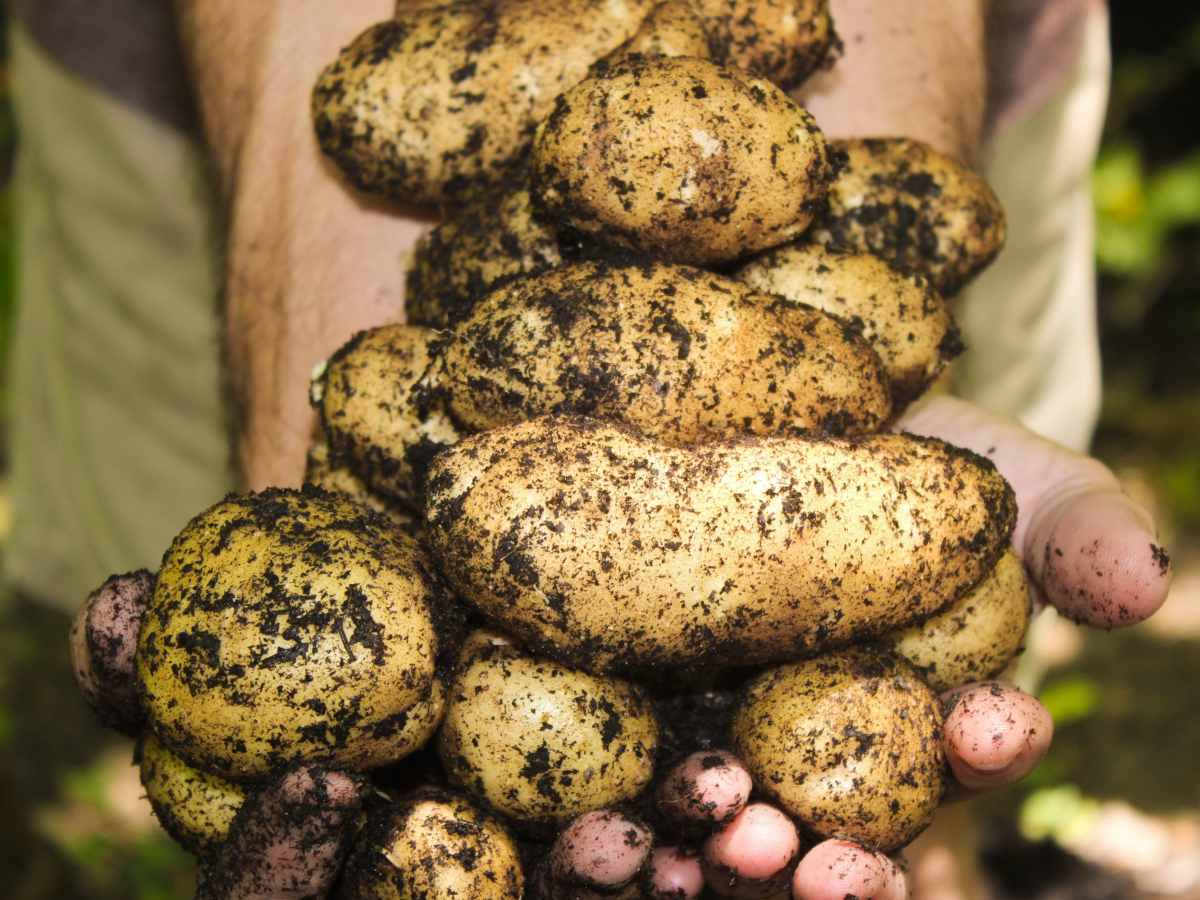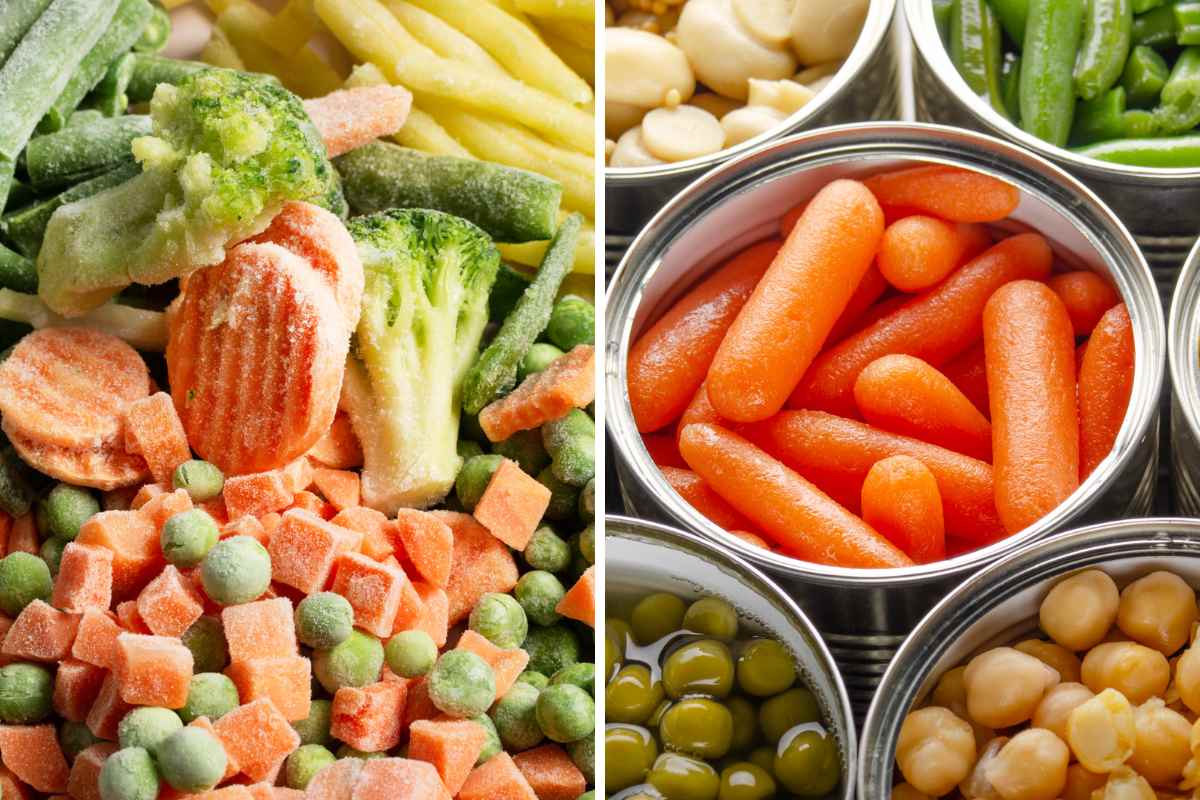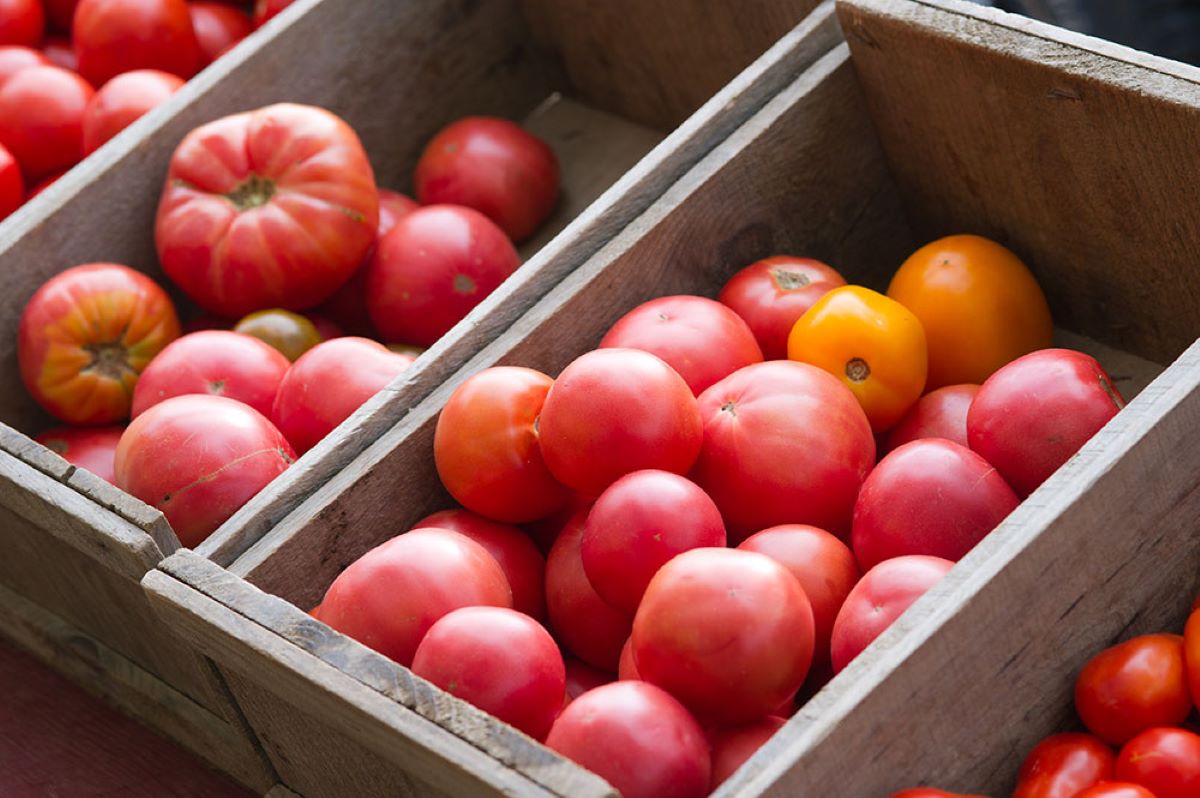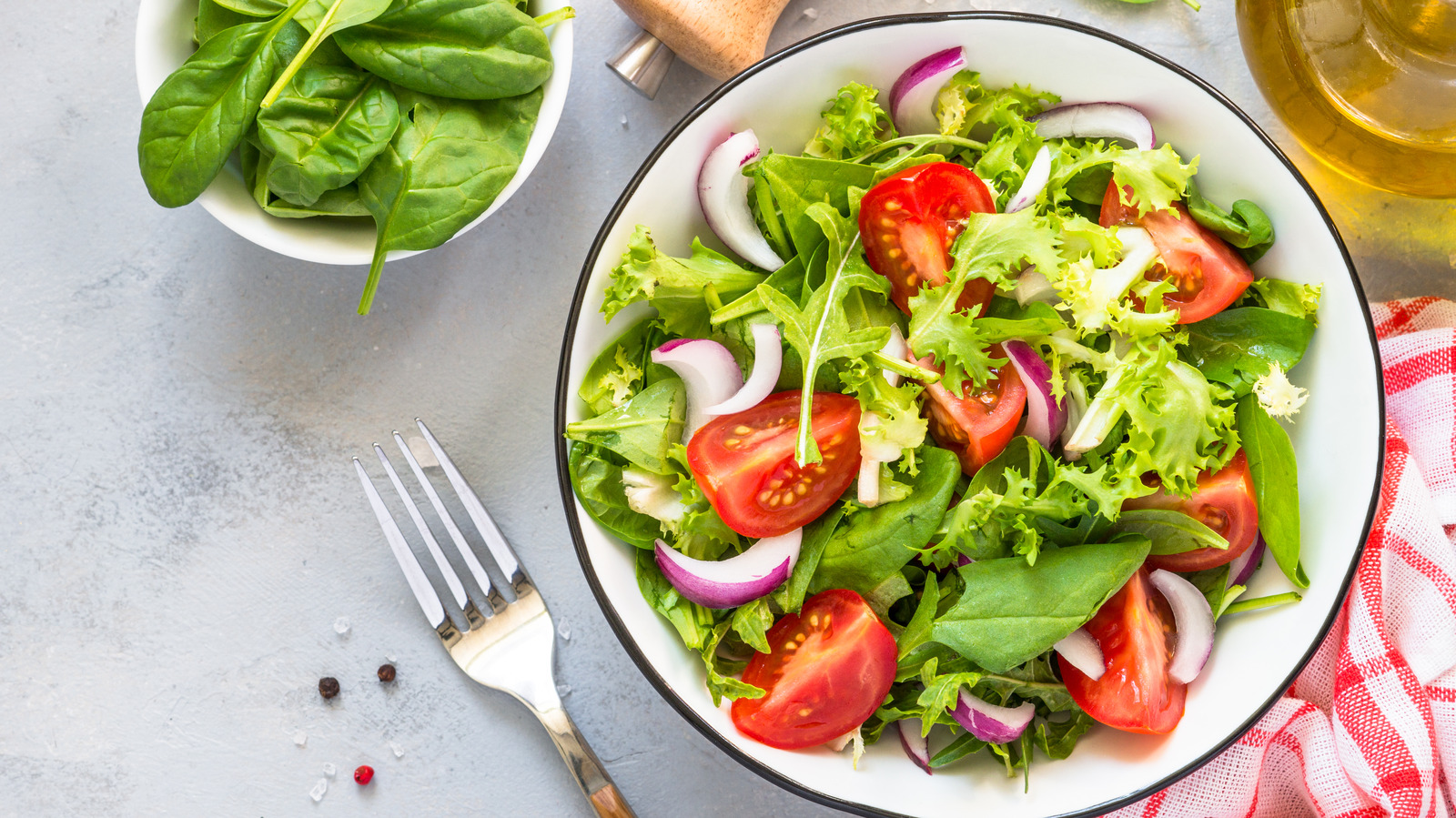Home>Gardening News and Trends>Latest News>Which Vegetables Should Not Be Eaten Raw?
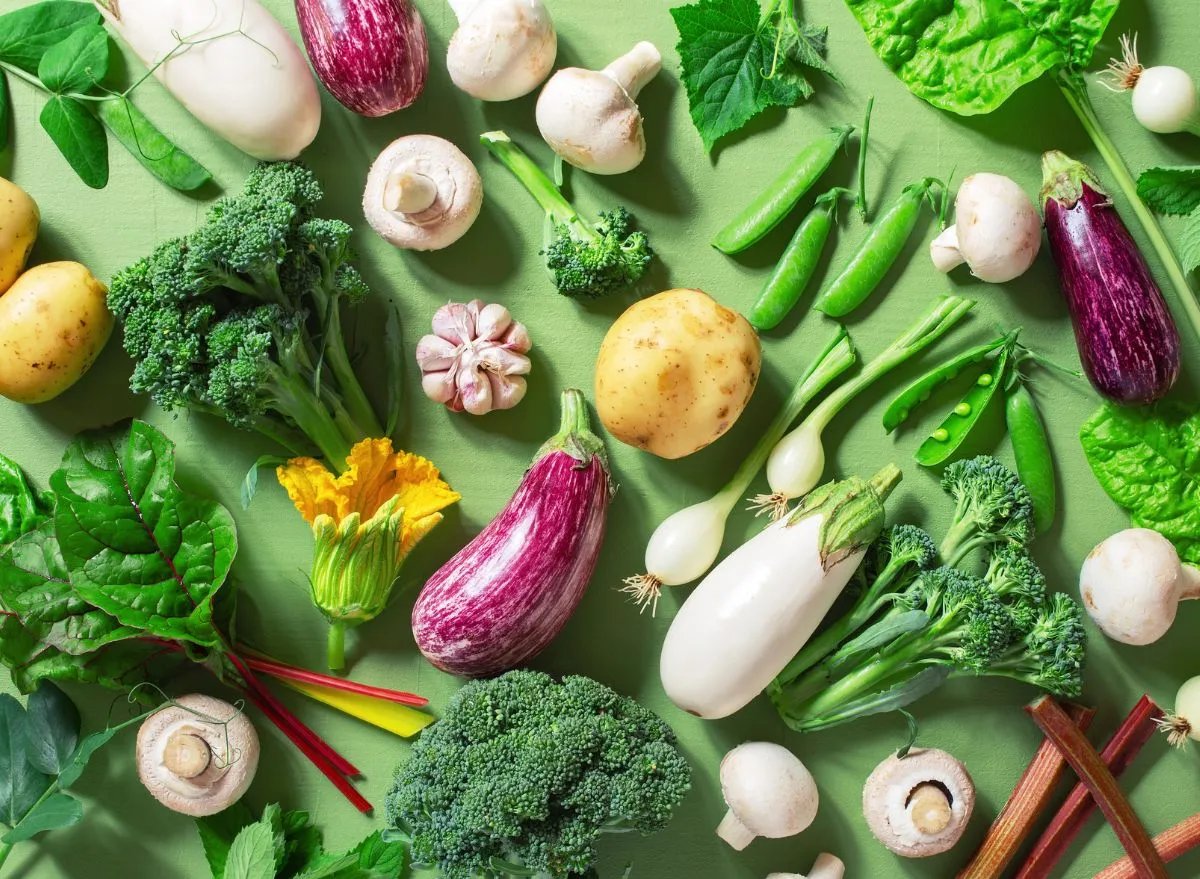

Latest News
Which Vegetables Should Not Be Eaten Raw?
Modified: January 22, 2024
Get the latest news on which vegetables should not be eaten raw, and ensure your safety when preparing your meals.
(Many of the links in this article redirect to a specific reviewed product. Your purchase of these products through affiliate links helps to generate commission for Chicagolandgardening.com, at no extra cost. Learn more)
Table of Contents
Introduction
When it comes to incorporating vegetables into our diets, we often hear about the numerous health benefits of eating them raw. Raw vegetables are packed with essential nutrients, enzymes, and fiber that can boost our overall well-being and support our immune system. However, not all vegetables are suitable for raw consumption. Cooking certain vegetables can actually enhance their nutritional value and improve their digestibility.
While raw vegetables can be nutritious, there are a few reasons why cooking them can be beneficial. Firstly, cooking vegetables can break down the tough cell walls, making the nutrients more readily available for absorption. Secondly, cooking can also reduce the levels of certain naturally occurring compounds that may interfere with nutrient absorption or digestion. Lastly, cooking can enhance the flavor and texture of vegetables, making them more enjoyable to eat.
In this article, we will explore some vegetables that are best eaten cooked rather than raw. While it’s still important to include a variety of raw vegetables in our diet, it’s good to know which ones are better suited for cooking to ensure we get the most out of their nutritional benefits. So, let’s dive in and discover which vegetables should not be eaten raw!
Reasons to Cook Vegetables
Cooking vegetables can offer a range of benefits, both in terms of nutrition and digestion. Here are a few reasons why cooking certain vegetables is advantageous:
- Enhanced Nutrient Absorption: Cooking certain vegetables can help break down their cell walls, making it easier for our bodies to absorb and utilize the nutrients they contain. For example, cooking carrots increases the availability of beta-carotene, a precursor to vitamin A, which is essential for good vision and a healthy immune system.
- Improved Digestibility: Some vegetables contain compounds that can be hard to digest or may cause discomfort when consumed raw. Cooking can help break down these compounds and make them easier on the digestive system. For instance, cooking cruciferous vegetables like broccoli and cauliflower can make them more digestible and reduce the likelihood of bloating or gas.
- Reduced Anti-Nutrients: Certain vegetables contain natural compounds known as anti-nutrients, which can interfere with nutrient absorption or contribute to digestive issues. Cooking can help reduce the levels of these compounds, making the vegetables more nutritious and easily digestible. For example, cooking spinach can reduce its oxalic acid content, which can inhibit the absorption of calcium and iron.
- Enhanced Flavor and Texture: Cooking vegetables can bring out their natural flavors and improve their texture, making them more enjoyable to eat. It can soften the texture of fibrous vegetables like kale or Swiss chard, making them more tender and palatable. Additionally, cooking can enhance the natural sweetness of vegetables like carrots or bell peppers, making them more appealing to the taste buds.
- Expanded Culinary Options: Cooking vegetables opens up a world of culinary possibilities. From stir-frying and roasting to steaming and sautéing, there are countless ways to prepare and enjoy cooked vegetables. This variety can help keep your meals interesting and satisfying, ensuring that you maintain a balanced and nutrient-rich diet.
Overall, while including raw vegetables in your diet is important, cooking certain vegetables can offer various advantages in terms of nutrient absorption, digestion, flavor, and culinary versatility. By incorporating both raw and cooked vegetables into your meals, you can create a diverse and nourishing eating plan that supports your overall health and well-being.
Vegetables That Should Not be Eaten Raw
While raw vegetables can be a nutritious addition to our diet, there are certain vegetables that are best consumed cooked. These vegetables may contain specific compounds or elements that can have adverse effects when eaten raw. Here are some vegetables that are commonly recommended to be cooked before consumption:
- Potatoes: Raw potatoes are generally not recommended for consumption as they contain starches that can be difficult to digest. Cooking potatoes helps break down these starches, making them easier on the digestive system and increasing nutrient availability.
- Beans: Many types of beans, such as kidney beans, lima beans, and black beans, contain lectins, a type of protein that can be toxic when consumed raw. Cooking beans effectively destroys these lectins and makes them safe to eat.
- Eggplant: Raw eggplant contains solanine, a naturally occurring compound that can be toxic if consumed in large quantities. Cooking eggplant helps reduce solanine levels and improves its taste and texture.
- Mushrooms: While some varieties of mushrooms can be eaten raw, many experts recommend cooking them to enhance their flavor and make them easier to digest. Additionally, cooking mushrooms helps break down their chitin, a tough fiber that can be hard to digest when consumed raw.
- Rhubarb: Rhubarb stalks are tart and fibrous when eaten raw, making them unpleasant to consume. Cooking softens the stalks and reduces their tartness, making them more enjoyable and easier to incorporate into dishes.
- Kale: Raw kale can be tough and bitter, which may be unappealing to some. Cooking kale removes some of its bitterness and tenderizes the leaves, making it more palatable and easier to digest.
- Sweet Potatoes: Although rare, some people may experience digestive discomfort when consuming raw sweet potatoes. Cooking sweet potatoes not only enhances their sweetness but also improves their digestibility.
- Cassava: Raw cassava contains cyanide compounds that can be harmful if not properly processed or cooked. Boiling, baking, or fermenting cassava helps remove these toxins and makes it safe for consumption.
It’s important to note that cooking methods such as boiling, steaming, roasting, or baking can effectively cook these vegetables and make them safe and enjoyable to eat. By cooking these vegetables, you can unlock their full nutritional potential, improve their taste and texture, and ensure they are easier on your digestive system.
Potatoes
Potatoes are a staple food in many cuisines around the world and are incredibly versatile. While they can be enjoyed in various forms, including mashed, roasted, or fried, consuming raw potatoes is generally discouraged.
Raw potatoes contain resistant starches, which are a type of carbohydrate that can be difficult for the body to digest. These starches are not broken down in the stomach and small intestine but instead pass into the large intestine, where they can ferment and cause bloating, gas, and digestive discomfort.
Furthermore, raw potatoes may contain solanine, a naturally occurring toxic compound. Although the levels of solanine in raw potatoes are generally low, consuming large quantities of this compound can be harmful. Cooking potatoes effectively destroys solanine and reduces potential health risks associated with its consumption.
Cooking potatoes not only eliminates the digestive issues associated with raw consumption but also enhances their texture and flavor. Techniques such as boiling, baking, or roasting help break down the starches and make them more digestible. The heat applied during cooking also transforms the texture of potatoes, resulting in a softer consistency that is more palatable.
Additionally, cooking potatoes can increase the availability of certain nutrients. For example, cooking increases the release of beta-carotene, a precursor to vitamin A found in some potato varieties. This vitamin is crucial for maintaining healthy vision, supporting the immune system, and promoting proper growth and development.
It’s worth noting that potatoes should be cooked until they are soft and easily pierced with a fork. This ensures that the starches are fully broken down, making them more digestible and enjoyable to eat. Whether you choose to mash them, roast them, or prepare them in another delicious way, cooking potatoes unlocks their full potential and makes them a delightful addition to any meal.
Beans
Beans are a nutritious and versatile legume that can be found in various cuisines around the world. While beans are a fantastic addition to meals when cooked, it’s important to note that many types of beans should not be consumed raw.
One of the primary reasons for cooking beans is to eliminate lectins, a type of protein that can be toxic when consumed in high quantities. Lectins are naturally present in beans as a defense mechanism against pests. However, they can cause gastrointestinal discomfort and other unpleasant symptoms when consumed in their raw form.
Cooking beans effectively destroys lectins and makes beans safe to eat. Soaking dried beans overnight and then boiling them for an extended period can further reduce lectin content. It’s important to note that canned beans are already cooked, and simply rinsing them thoroughly can help remove excess lectins.
In addition to reducing the levels of lectins, cooking beans has other advantages. It improves their texture, softening them and making them more enjoyable to eat. Cooking also enhances the flavors of beans, allowing them to absorb seasonings and other ingredients during the cooking process.
Furthermore, cooking beans can improve their digestibility. Raw beans contain complex sugars and fibers that can be challenging for the digestive system to break down. By cooking beans, these complex sugars and fibers are broken down, making them easier to digest and reducing the likelihood of bloating or gas.
Not only are cooked beans more digestible, but they are also a good source of plant-based protein, fiber, and other essential nutrients. They provide a wide range of health benefits, including supporting heart health, promoting regular bowel movements, and providing sustained energy throughout the day.
Whether you enjoy them in a hearty chili, a flavorful salad, or as a side dish, cooking beans unlocks their nutrients and ensures they are safe and satisfying to consume. So, take the time to properly cook your beans, and enjoy the many delicious and nutritious dishes you can create with these versatile legumes.
Eggplant
Eggplant is a popular vegetable known for its unique flavor and versatility in cooking. While it can be enjoyed in various dishes, consuming raw eggplant is generally not recommended.
Raw eggplant contains a naturally occurring compound called solanine. Solanine is a glycoalkaloid that acts as a natural defense mechanism in the plant. In high concentrations, solanine can be toxic and may cause symptoms such as stomach discomfort, headache, and even paralysis.
Fortunately, cooking eggplant effectively reduces the solanine content and makes it safe for consumption. Cooking also improves the taste and texture of eggplant, making it more enjoyable to eat.
When cooked, eggplant becomes tender and develops a rich, creamy texture. This not only enhances its palatability but also makes it easier to incorporate into various dishes. Whether grilled, roasted, or sautéed, the cooking process transforms the eggplant into a delicious and versatile ingredient.
Furthermore, cooking eggplant allows for the absorption of flavors from other ingredients. Eggplant acts like a sponge, soaking up the flavors of spices, herbs, and other seasonings used in the cooking process. This enhances the overall taste profile of the dish and makes the eggplant a standout ingredient.
It’s important to note that when cooking eggplant, it’s advisable to remove the bitter juices and some of the salt before proceeding with the recipe. This can be done by either salting and draining the eggplant slices or lightly pre-cooking them to remove excess moisture and bitterness.
Cooked eggplant is not only safe to eat but also brings a plethora of health benefits. It is low in calories and packed with essential nutrients such as fiber, antioxidants, and vitamin C. These nutrients contribute to improved digestion, heart health, and a strengthened immune system.
So, whether you use it in a classic eggplant Parmesan, a hearty ratatouille, or any other recipe you wish to explore, cooking eggplant unlocks its flavor potential and makes it a delicious addition to your meals.
Mushrooms
Mushrooms are a unique and versatile ingredient that can elevate the flavors of many dishes. While some varieties of mushrooms can be consumed raw, it is generally recommended to cook mushrooms before eating them.
One of the primary reasons to cook mushrooms is for enhanced flavor and improved digestibility. Raw mushrooms can have a tough texture and a slightly bitter taste, which may not be appealing to everyone. Cooking mushrooms helps soften their texture, making them more tender and palatable. It also enhances their natural flavors by caramelizing their sugars and releasing their savory compounds.
Another important reason to cook mushrooms is to break down the chitin that they contain. Chitin is a tough fiber found in the cell walls of mushrooms, which can be hard to digest when consumed raw. Cooking mushrooms helps break down this fiber, making them easier to digest and increasing the bioavailability of their nutrients.
Cooking mushrooms also helps eliminate any potential toxins or harmful microorganisms that may be present. While mushrooms are generally safe to eat, there are some varieties that contain small amounts of natural toxins. Cooking mushrooms helps neutralize these toxins and ensures the mushrooms are safe for consumption.
Additionally, cooking mushrooms allows for the release of their nutritional content. Mushrooms are a good source of various vitamins and minerals, including B vitamins, potassium, and selenium. When cooked, these nutrients become more bioavailable, meaning they are more easily absorbed by the body.
It’s important to note that there are some varieties of mushrooms, such as morel mushrooms, that should never be consumed raw due to their potentially toxic compounds. These mushrooms must always be cooked thoroughly to ensure their safety.
Whether you sauté them, roast them, or use them in soups and stews, cooking mushrooms unlocks their full flavor potential, improves their digestibility, and ensures their safety. So, next time you prepare a meal with mushrooms, take the time to cook them and savor their delicious taste and nutritional benefits.
Rhubarb
Rhubarb is a unique vegetable that is often used in desserts, jams, and pies for its tart flavor. While it is commonly cooked and sweetened in recipes, consuming raw rhubarb is generally not recommended due to its taste and texture.
Raw rhubarb stalks have a fibrous and stringy texture that can be unpleasant to consume. Cooking rhubarb helps soften the stalks and breaks down their tough fibers, making them more enjoyable to eat. This enhances the overall texture of rhubarb-based dishes and allows for better integration with other ingredients.
Another reason to cook rhubarb is to reduce its natural tartness. Raw rhubarb has a sharp and sour taste due to the presence of malic acid. Cooking rhubarb helps break down this acid, reducing its tartness and making it more palatable. Additionally, adding sugar or other sweeteners during cooking can balance the tartness and create a delightful balance of flavors.
Aside from improving taste and texture, cooking rhubarb can also enhance its nutritional profile. Rhubarb is a good source of dietary fiber, vitamin K, and antioxidants. By cooking rhubarb, these nutrients become more accessible and easily absorbed by the body.
When cooking rhubarb, it is important to remember that only the stalks are edible. The leaves of rhubarb contain high levels of oxalic acid, which can be toxic if ingested in large quantities. Therefore, it is essential to trim and discard the leaves before cooking with rhubarb.
Whether you use rhubarb in a pie, crumble, compote, or any other recipe, cooking it is essential to improve its taste, texture, and safety. So, indulge in the delightful flavors of cooked rhubarb and create delectable dishes with this unique vegetable.
Kale
Kale is a nutrient-dense leafy green vegetable that has gained popularity for its health benefits. While kale can certainly be enjoyed raw in salads and smoothies, cooking kale offers several advantages.
Raw kale can have a tough and fibrous texture, making it challenging to chew and digest. Cooking kale helps break down the tough fibers, making it more tender and easier to eat. It also removes some of the bitterness that can be present in raw kale, making it more palatable.
Cooking kale can also enhance its nutritional value. While raw kale is rich in vitamins, minerals, and antioxidants, cooking can increase the bioavailability of these nutrients. Heat breaks down the cell walls of kale, making the nutrients more accessible and easier for the body to absorb.
Furthermore, cooking kale can reduce the levels of goitrogens, naturally occurring substances that can interfere with thyroid function. Goitrogens can hinder iodine absorption, leading to potential issues with thyroid health. By cooking kale, the goitrogens are partially deactivated, reducing their potential impact on the thyroid.
Cooking kale provides versatility in preparing it. It can be sautéed, steamed, or blanched, allowing for various flavors and seasonings to be incorporated. This opens up a range of culinary possibilities and textures to explore.
It’s important to note that while cooking kale has its benefits, it’s also essential not to overcook it. Overcooking can lead to a loss of nutrients and a mushy texture. Ideally, kale should be cooked until it is wilted but still retains some of its vibrant color and crispness.
By cooking kale, you can transform this nutritious leafy green into a more enjoyable and digestible form while maximizing its nutritional content. So, experiment with different cooking methods and recipes to discover the deliciousness and health benefits that cooked kale can offer.
Sweet Potatoes
Sweet potatoes are a delicious and nutritious root vegetable that can be enjoyed in a variety of ways. While they can be eaten raw, cooking sweet potatoes offers several advantages.
Raw sweet potatoes can have a dense and starchy texture, which may be challenging to chew and digest. Cooking sweet potatoes softens their texture, making them easier to eat and digest. The heat also helps break down complex carbohydrates into simpler sugars, resulting in a sweeter and more flavorful end product.
Cooking sweet potatoes not only improves their texture but also enhances their taste. The natural sugars in sweet potatoes caramelize when cooked, creating a delicious depth of flavor. This sweetness is particularly enjoyable in dishes like roasted sweet potatoes or sweet potato casseroles.
Additionally, cooking sweet potatoes increases the bioavailability of certain nutrients. Sweet potatoes are an excellent source of beta-carotene, which is converted into vitamin A in the body. The body absorbs beta-carotene more efficiently from cooked sweet potatoes compared to raw ones, maximizing its nutritional benefits.
Cooking methods such as baking, roasting, or steaming are popular ways to cook sweet potatoes. These methods help retain the nutrients in sweet potatoes while adding a delightful caramelized exterior and tender interior.
It’s worth noting that some people may experience mild digestive discomfort when eating raw sweet potatoes due to their resistant starch content. Cooking sweet potatoes helps break down these starches, making them easier on the digestive system and reducing the likelihood of digestive issues.
Whether you enjoy sweet potatoes as a side dish, in soups, or in baked goods, cooking them unlocks their full potential. The soft, sweet, and flavorful result is not only delicious but also rich in essential nutrients like vitamin A, fiber, and antioxidants.
So, take advantage of the culinary possibilities that cooking sweet potatoes offers and savor their delightful taste and nutritional benefits.
Cassava
Cassava, also known as yuca, is a starchy root vegetable commonly consumed in many parts of the world. While cassava can be eaten raw, it is important to note that raw cassava contains toxins and should never be consumed without proper cooking.
Raw cassava contains compounds known as cyanogenic glycosides, which can release cyanide when ingested. Cyanide is a highly toxic substance that can be harmful to humans. However, cooking cassava thoroughly can effectively eliminate these toxins, making it safe for consumption.
Cooking cassava involves boiling, baking, or fermenting the root. These methods help break down the cyanogenic glycosides and reduce the cyanide content to safe levels. Cassava is commonly boiled or roasted, transforming the starchy root into a soft, flavorful, and easily digestible food.
In addition to detoxifying cassava, cooking also enhances its taste and texture. Raw cassava has a firm and slightly fibrous texture, which can be challenging to eat. Cooking cassava helps soften it, resulting in a more tender and palatable mouthfeel.
Cassava is a staple in many traditional dishes and provides a good source of carbohydrates in regions where it is commonly consumed. It is rich in dietary fiber, vitamin C, and certain minerals, making it a valuable addition to a balanced diet.
Advanced cooking methods such as fermentation are also used to process cassava, producing products such as cassava flour and tapioca. Fermentation helps further reduce the cyanide content and unlock additional nutritional benefits. It also enhances the flavor and creates unique culinary applications.
It’s important to note that while cassava is safe to consume when cooked, it should always be sourced from reliable and reputable suppliers to ensure the proper processing and removal of toxins.
By cooking cassava, you can enjoy its delightful taste, improved texture, and nutritious qualities. So, explore different cooking techniques and traditional dishes involving cassava to savor the flavors and experience the benefits of this versatile root vegetable.
Conclusion
While raw vegetables are often hailed for their nutritional benefits, there are certain vegetables that are best consumed cooked. Cooking vegetables not only enhances their taste and texture but also improves their digestibility and nutrient availability.
In this article, we explored several vegetables that are recommended to be cooked before consumption. Potatoes, beans, eggplant, mushrooms, rhubarb, kale, sweet potatoes, and cassava are all examples of vegetables that offer enhanced health benefits when cooked.
Cooking vegetables helps break down tough fibers, making them easier to chew and digest. It also improves their flavors and aromas, making them more enjoyable to eat. By cooking vegetables, we can also reduce the levels of naturally occurring compounds that may interfere with nutrient absorption or digestion.
Furthermore, cooking vegetables can increase the availability of certain nutrients, such as beta-carotene in potatoes or antioxidants in mushrooms. It also reduces the potential risks associated with consuming raw vegetables, such as toxicity in cassava or bitterness in kale.
It’s important to note that the specific cooking methods vary for each vegetable. Boiling, baking, steaming, or sautéing are common methods used to cook vegetables and unlock their nutritional potential.
Incorporating a variety of both raw and cooked vegetables into our diets is essential for a well-rounded and nutritious eating plan. By understanding which vegetables are best consumed cooked, we can maximize their nutritional benefits and ensure we enjoy delicious, safe, and easily digestible meals.
So, whether you’re sautéing mushrooms, roasting sweet potatoes, or boiling beans, embrace the transformative power of cooking and savor the flavors and health benefits that properly cooked vegetables have to offer.
